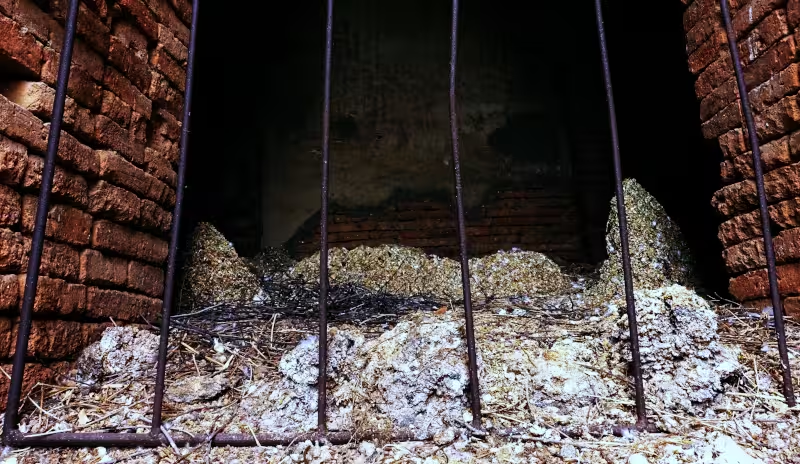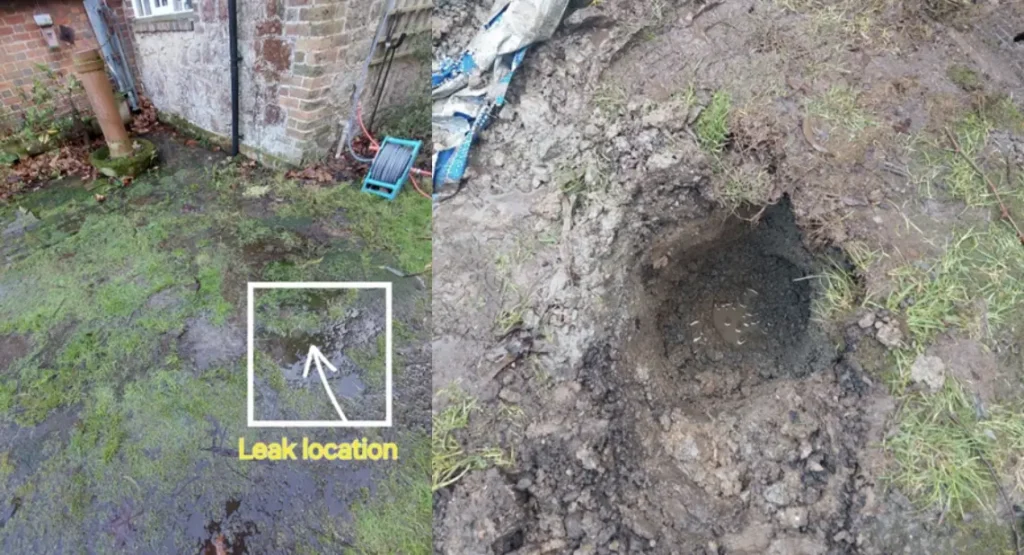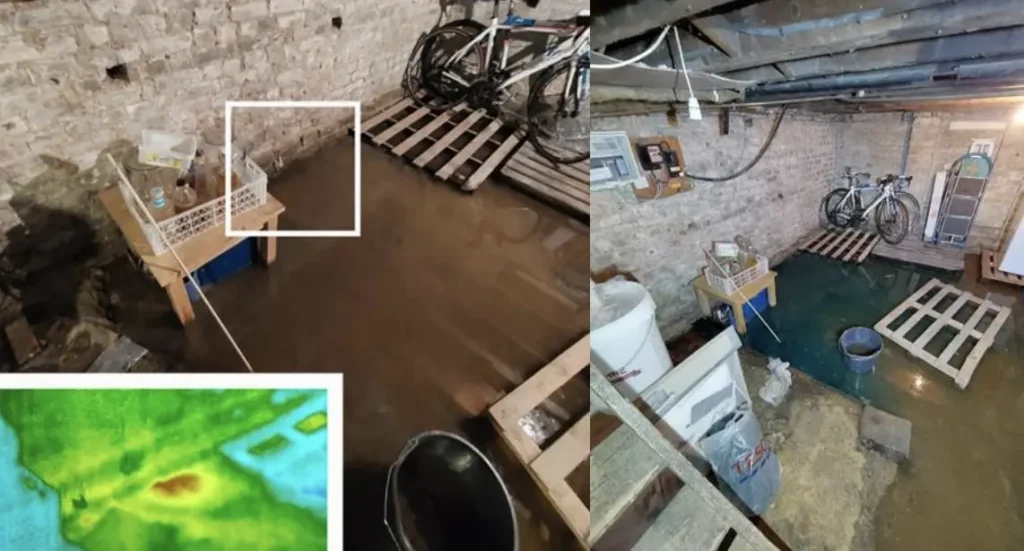The Problem
In Kings Langley, Hertfordshire, a burst water tank in the loft of a 1960s detached home caused extensive water damage. Both the ground and first floors were severely affected, with the rear of the property bearing the brunt of the damage. The property and homeowner were in desperate need of an emergency flood damage cleaning service.
Key Issues:
Saturation Levels:
- Sample points revealed readings of 100% WME (Wood Moisture Equivalent), indicating maximum saturation.
- Hygroscopic materials like plasterboard and timber posed a risk of swelling and mould growth due to moisture absorption.
Construction Challenges:
- External walls were brick with suspected trapped moisture in the wall cavities.
- Ceilings were constructed of 22mm plasterboard, finished with wallpaper or paint, which acted as vapour barriers, inhibiting evaporation.
- Flooring included sand cement screed, bitumen adhesive, and various coverings, some of which were resistant to moisture evaporation.
Health Risks:
- Saturated materials provided an ideal environment for microbial growth, with plasterboard being particularly vulnerable to mould colonisation within hours.
According to the UK Environment Agency, domestic flooding affects thousands of properties annually, with average restoration costs ranging from £20,000 to £30,000. Proper clean-up and drying processes are essential to prevent further structural damage and health risks.
The Solution
To restore the property to its pre-flood condition, we implemented a comprehensive flood damage clean-up plan.
Step 1: Assessment and Moisture Monitoring
- Conducted an in-depth inspection of the property to evaluate saturation levels and identify trapped moisture.
- Used in-depth relative humidity probes to confirm moisture in wall cavities by drilling small access points.
- Regular readings ensured effective monitoring and prevention of secondary damage.
Step 2: Strip-Out and Preparation
- Removed all flooring, except tiles in the hallway and kitchen at the client’s request (despite warnings of potential moisture migration and future damage).
- Stripped walls back to brick/blockwork, including wallpaper and ceramic tiles that acted as vapour barriers.
- Removed damaged plasterboard, plywood, and insulation from ceilings and loft spaces to address pockets of trapped moisture.
Step 3: Mould Prevention
- Treated exposed areas to eliminate potential mould colonies, a critical step to ensure long-term hygiene and structural integrity.
- Addressed any contaminated absorbent materials to reduce the likelihood of future microbial growth.
Step 4: Flood Drying Process
- Deployed a tailored drying regime over four weeks using advanced equipment:
- Condensing dehumidifiers to remove moisture from the air.
- Adsorption dehumidifiers for high capacity drying in colder conditions.
- Turbines and piping kits to improve air circulation and dry materials at depth.
Step 5: Client Consultation
- Provided detailed advice to the client regarding moisture risks from retaining floor tiles, ensuring informed decisions.
The Result
Our methodical approach successfully restored the property, preventing long-term damage and ensuring it was safe for reoccupation.
Key Outcomes:
Effective moisture removal:
- Hygroscopic materials were fully dried, and hidden moisture pockets were eliminated.
- Wall cavities, ceilings, and loft spaces were thoroughly treated to prevent microbial growth.
Structural integrity maintained:
- Stripping walls, ceilings, and flooring allowed the property to dry efficiently, safeguarding its structural health.
- Treated surfaces are now ready for redecoration and repair.
Client Satisfaction:
Client satisfaction:
- Despite the challenges, the drying and restoration process was completed within the estimated timeline of four weeks.
- The client was provided with clear guidance for ongoing maintenance and moisture prevention.
Flood damage requires swift and professional intervention to protect your property and health. Our expert team in Hertfordshire ensured the efficient restoration of this property, using advanced techniques tailored to the unique challenges of flood recovery.
If your property has been affected by water damage, don’t hesitate in contacting one of the team today for a comprehensive flood damage clean-up service.





















